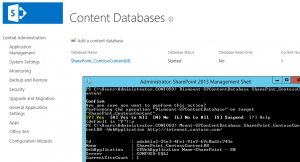I was recently helping out a friend who had a KMS server activating their Windows 7 machines but when they started moving their fleet to Windows 8.1 they saw they couldn’t install the KMS Host product key for Windows 8.1 recieving the following error:
0xc004f015: The Software Licensing Service reported that the license is not installed. SL_E_PRODUCT_SKU_NOT_INSTALLED
To allow Server 2008 R2 to activate newer versions of windows you need to install KB 2885698. The update adds support for Windows 8.1 and Windows Server 2012 R2 clients to Windows Server 2008, Windows 7, Windows Server 2008 R2, Windows 8, and Windows Server 2012 KMS hosts (see Windows Server 2012 R2 & Windows 8.1 KMS Service Activation).
Once you install the update you will need to restart the server (so do it out of hours if it’s on a DC or something critical). Once you’re back up and running, you simply need to issue the install product key command with your new KMS Host key.
slmgr.vbs /ipk YOUR-PROD-UCTK-EYHE-RE33
And your clients will begin activating once you hit the 25 client minimum. The key will continue to activate lower versions of Windows and if you install a Server key, it will do both Server and Client editions.
